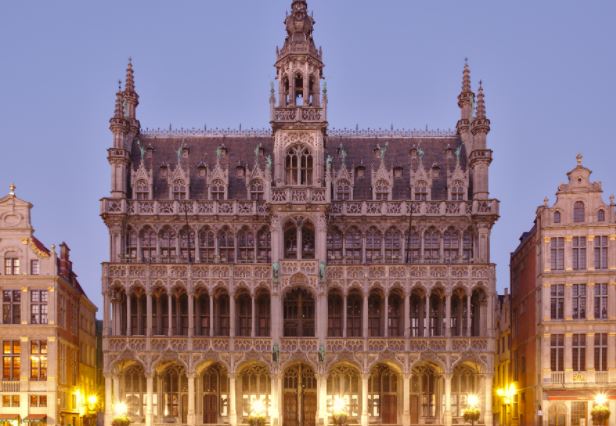Brussels City Museum

The Brussels City Museum (French: Musée de la ville de Bruxelles, Dutch: Museum van de Stad Brussel) is a museum on the Grand Place of Brussels, Belgium. It is dedicated to the history and folklore of the City of Brussels from its foundation to modern times, which it presents through paintings, sculptures, tapestries, engravings, photos and models, including a notable scale-representation of the town during the Middle Ages.[1]
Originally conceived in 1860 and inaugurated in 1887, the museum is situated opposite Brussels’ Town Hall, in the Maison du Roi (“King’s House”) or Broodhuis (“Bread hall”). This building, in the Gothic Revival style, is listed as a UNESCO World Heritage Site, as part of the square.
Brussels’ Town Hall was erected in stages, between 1401 and 1455, on the south side of the Grand Place, transforming the square into the seat of municipal power. To counter this, from 1504 to 1536, the Duke of Brabant ordered the construction of a large Flamboyant edifice across from the city hall to house his administrative services.[4] It was erected on the site of the first cloth and bread markets, which were no longer in use. The building was first called the Duke’s House (Middle Dutch: ‘s Hertogenhuys), but when Charles V, Duke of Brabant since 1506, was crowned King of Spain in 1516, it became known as the King’s House (Middle Dutch: ‘s Conincxhuys). It is currently known as the Maison du Roi (“King’s House”) in French, although no king has ever lived there, though in Dutch it continues to be called the Broodhuis (“Bread hall”), after the market whose place it took.
